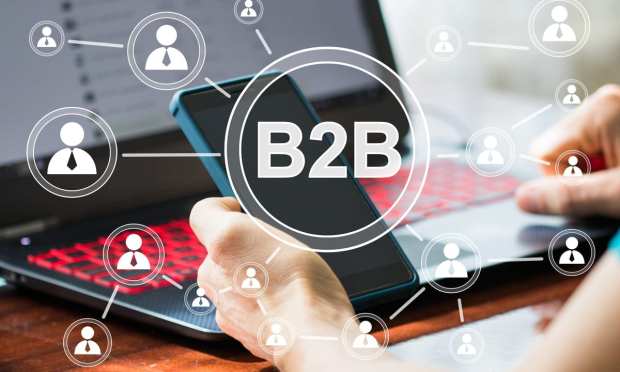Bracing For New Challenges In A World Of B2B Payment Ecosystems

Accounts receivable (AR) and accounts payable (AP) have historically been entirely separate functions in the back office. But FinTech innovators are beginning to explore the concept of bridging the gap between these two intrinsically connected workflows. After all: one company’s accounts receivable is another’s accounts payable.
Embracing this relationship can be an important part of modernizing B2B payments, particularly for small to medium-sized (SMBs) businesses. But companies continue to rely on paper checks, and enveloping businesses within AR/AP ecosystems is not necessarily an easy task for firms that rely on outdated tools.
Speaking with PYMNTS, Hamed Abbasi, co-founder and CEO of B2B payments platform Plooto, discussed the benefits of encouraging AR/AP connectivity and explored the biggest challenges ahead for the B2B payments sector as new ecosystems and networks emerge, competing for participation from both buyers and suppliers.
The Risk Of AR/AP Connectivity
A growing number of FinTech platforms are dedicated to easing friction in either accounts receivable or accounts payable. It is rarer to find a solution that tackles both. It’s no surprise, considering the historic silo that has separated the two.
According to Abbasi, managing risk in AR looks different from managing risk on the AP side of a B2B transaction, and encompassing risk management for both sides has been too complex to address simultaneously.
“It’s much easier to look at the risk on the AP side, whereas on the AR side the risk increases significantly,” he said.
For intermediary platforms, AP is about ensuring sufficient funds to pay for invoices. On the AR side, however, more complex challenges surface regarding a customer’s creditworthiness. Both, of course, also require compliance checks around anti-money laundering (AML) and know your customer (KYC) as well.
At the heart of these friction points, noted Abbasi, is the legacy and outdated payment infrastructures found in the U.S. and Canada, which slow down the movement of funds, limit the transfer of data and can ultimately heighten risk for either side.
“ACH in the U.S. and ESB in Canada — these were systems that were … built in [about] the ’70s, and they’re being upgraded slowly, but there hasn’t been much innovation on them for many, many decades,” he said. “What that does is, in a lot of cases, increases the risk that exists … [for] vendors defaulting on their payments, not being able to cover the funds before they clear.”
For Plooto, overcoming this challenge means integrating a range of sophisticated technologies to automate compliance checks and mitigate risk. But there is another factor to easing AR/AP connectivity that is brewing throughout the B2B payments arena: the creation of ecosystems.
Developing B2B Payment Ecosystems
According to Abbasi, by combining AR and AP in a single solution and by looping both the buyer and the supplier into a unified portal, that tool can further mitigate risk because it gains visibility into the entire B2B payment lifecycle.
This can mean faster funds settlement and a greater incentive for both sides to adopt the same solution.
Plooto is not the first B2B FinTech to embrace the development of a network or ecosystem to create an environment of boosted efficiency and security. As a result, for all its benefits, the ecosystem approach also comes with a difficult challenge: either enticing firms to join your ecosystem over others or encouraging businesses to join multiple ecosystems at once.
But for Abbasi, the benefits of this ecosystem are too great to pass up.
“This already exists with closed networks like Visa and Mastercard — that’s an example of a network where both sides of the transaction are on the same network,” he said. “You can go to a coffee shop, tap your card and wait less than a second for that transaction to be authorized and for you to grab your coffee and go. Really, that’s how we see the future of businesses transacting with one another.”
Of course, there will be challenges ahead. In addition to driving adoption, ecosystem success often relies on its ability to address the challenges of as many entities as possible. But each vertical — and indeed, each company — is unique, meaning industry-specific, or business size-specific, ecosystems may initially see greater traction.
The result may, unfortunately, be a community of ecosystems designed to break down silos that ultimately raise new barriers between each other. In an ideal world, said Abbasi, the B2B payments industry would evolve such that these various ecosystems can loop into each other.
“I can’t really forecast what the dominant players are going to do to create a seamless experience between all the businesses that are part of their network, but I would assume that it would be ideal to one day connect everything together,” he said, noting, however, that such a reality remains far off into the future.
For now, the most pressing concern of the B2B payments space should be to ready small to medium-sized businesses for that future by bringing them up to speed with FinTech and electronic payments — and to drive SMBs away from checks and wires.
“What we need to focus on as an industry at this time is to bring people into the twenty-first century,” he said.
